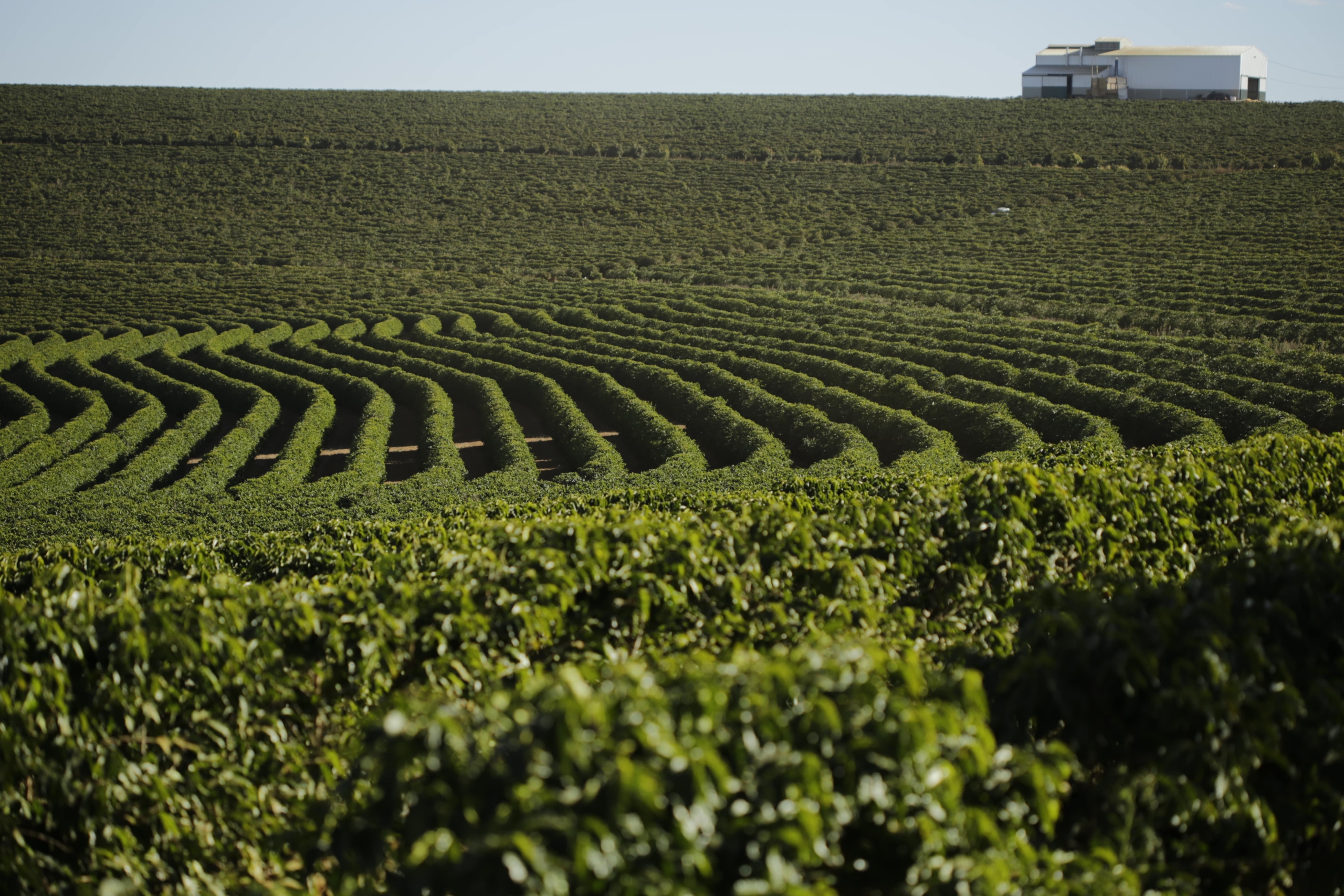Brazil is the largest coffee growing country in the world, responsible for 30 percent of coffee grown worldwide, about 74 percent of which is Arabica. Brazilian coffee is grown on large plantations designed to facilitate efficient, mechanized processes. Due to the relatively flat landscape and high minimum wages, mechanical harvesting is prevalent. To be clear, mechanized picking is no longer synonymous with strip picking, and the use of harvesters is often combined with derriçadeira, handheld machines that can be manually aimed at more ripe areas of the tree. The result is a kind of mechanized selective picking that delivers high quality arabica coffee at imposing scale.
Most Brazilian coffees are processed using natural and pulped natural processes, meaning the coffee is dried with all or a large amount of fruit on the bean. This process imparts sweet, fruity notes and produces a creamy body. The result is a well-balanced, nutty, chocolatey profile with low citric acidity and smooth body — a universally enjoyable cup that has become famous the world over.
Swiss Water Process
Swiss Water Process (SWP) decaffeination works through diffusion, not osmosis. Initially, green coffee beans are soaked in water until all the caffeine and flavor compounds are extracted. The beans are then discarded, and the solution they created is run through a carbon filter that removes the caffeine, leaving behind only the flavor compounds—what SWP calls its green coffee extract, or GCE.
When SWP decaffeinates a coffee, the beans are soaked with a small amount of the GCE, which creates a saturated solution in which the caffeine leaves but the flavor compounds remain in place, unaffected. The GCE is like a yeast “mother.” While initially SWP had to sacrifice some coffee to create it, once the first batch was made, it just needs to maintain the health of the GCE and keep it slowly regenerating, which it does by adding small amounts of clean water.

